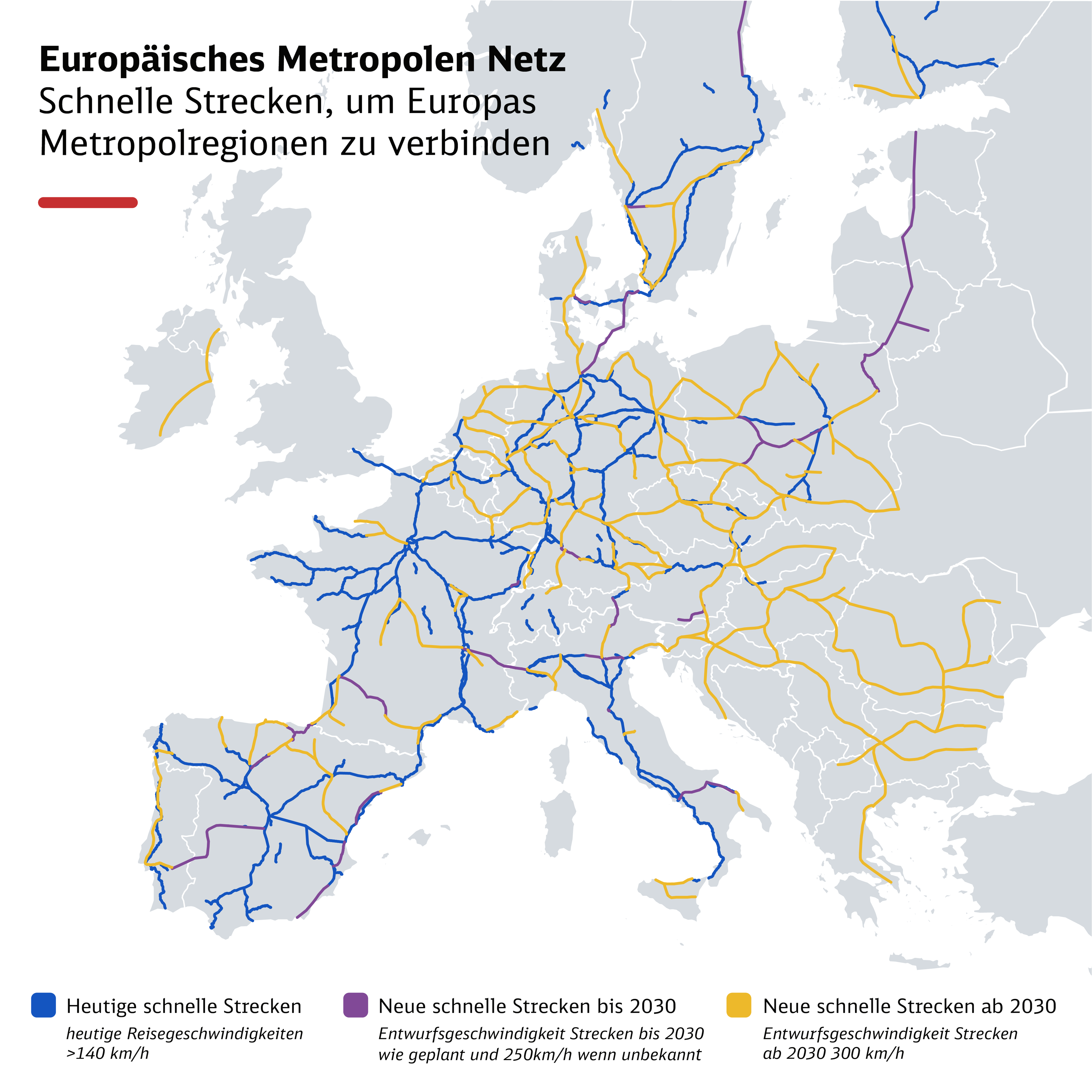 Deutsche Bahn (DB), in partnership with other major European operators, draw up a proposal for European high-speed rail expansion aiming at connecting two-thirds of Europeans by 2050.
Deutsche Bahn (DB), in partnership with other major European operators, draw up a proposal for European high-speed rail expansion aiming at connecting two-thirds of Europeans by 2050.
The study is proposing a “Metropolitan Network” which is focused on the specific expansion of the rail lines for fast passenger trains across the continent and on the simulation of the resulting possible growth in transport volume on environmentally friendly rail.
In short, the study proposes the expansion of the high speed network from 11,300 to 32,000 km in 2050. A total of 21,000 km of track needs to be built and upgraded across Europe. Thus, the routes designed for high-speed rail service would be nearly tripled and will allow trains to reach speeds of 300 km/h on the new network.
The Metropolitan Network project aims at connecting all 230 metropolitan regions, defined as urban agglomerations of more than 250,000 inhabitants, and large cities in Europe to the high-speed rail network with HSR service at least once an hour. If expansion will be in place, around 60% of Europeans that live in the metropolitan regions would have direct access to high-speed rail, even in regions where there are no fast rail links at all today.
Deutsche Bahn says that for Germany, the high speed rail expansion means that if the network upgrade were to include the lines already under construction and planned, the high-speed infrastructure in this country would grow to cover 6,000 km. Poland would also be a winner, increasing its network more than tenfold, by 2,760 km from today’s 224 km.
The proposal on the European high-speed rail expansion will support the achievement of the European Green Deal to double the high-speed rail by 2030 and to tiple it by 2050 allowing it to make an important contribution to reducing carbon emissions in the transport sector. This will help Europe to cut transport emissions by 90% in 2050, in accordance with the European policy.
“A tripling of high-speed rail traffic in Europe is possible. Once the infrastructure is in place, millions of people on the continent will benefit from attractive connections and faster travel times. The rail countries in central and western Europe, and even more so in southern and eastern Europe, will enjoy the advantages. According to our calculations and simulations, this will result in faster travel times on entirely new corridors and via new traffic hubs on rail,” Michael Peterson, the Member of the Management Board for Long Distance Passenger Transport at DB said.
The rail companies involved in the study want to discuss this with politicians in the fall. The infrastructure measures currently being planned or built are not sufficient to achieve a doubling of high-speed rail traffic by 2030.
In January 2023, a study published by EU-RAIL, AllRail, CER and UNIFE highlights that all the capitals and major cities need to be connected to an extended high-speed network which would have a length of 49.400 km in 2040 (in the 2050 scenario). Part of the TEN-T core network, the high speed system would have 20.500 km, providing connections to additional 86 million people.
Share on:



